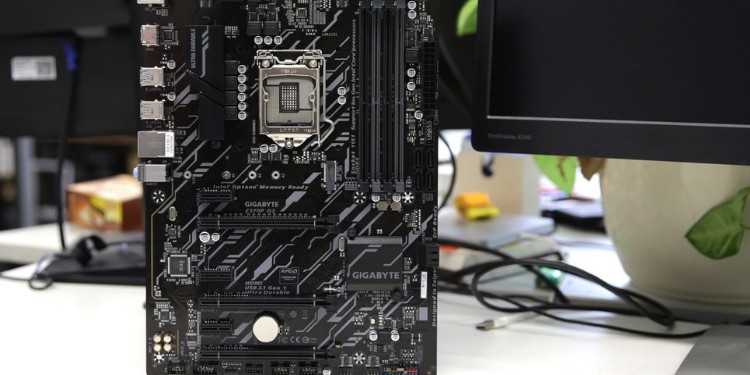Last Updated on
The motherboard forms the foundation of every PC build. It determines how much and what kind of hardware you can put into your new computer. From the type of CPU to the amount of RAM, choosing the right motherboard is essential for having the finished product you want.
When it comes to Z370 motherboards, they are the highest end motherboards for Intel’s 8th and 9th generation Coffee Lake processors and are the only motherboards that allows them to be overclocked.
To help you find the best Z370 motherboard to suit your needs we’ve rounded up our top picks and included a guide below to arm you with the knowledge to make an informed choice.
How to Pick the Best Z370 Motherboard for Your Needs
Motherboards are complex pieces of hardware that ultimately determine a number of things about how your final PC will run. In regards to Z370 motherboards, they allow you to use any of Intel’s 8th and 9th generation Coffee Lake CPUs. The Z370 chipset is the highest one offered, and is the only way to overclock “k” sku CPUs.
Let’s take a look at some of the most crucial things to keep an eye on when shopping for a new motherboard to ensure you’re picking the best motherboard for your needs.
RAM slots
Random access memory, or RAM, functions as the “short term memory” of your computer. It runs at very high speeds compared to slower forms of storage such as hard drives and is used to store data in the short term that the CPU will need quick access to in the near future. What makes RAM unsuitable for long term storage is its small capacity and volatility (meaning whatever was stored on the RAM is gone when the RAM no longer has a constant supply of power being fed to it).
RAM takes the form of thin modules that simply plug into the DIMM slots on your motherboard. Different motherboards often have different numbers of these DIMM slots. Almost all of the motherboards on our list have four RAM slots and can accommodate up to 64GB of system memory. The only exception to this is the MSI Gaming Pro Carbon which sacrifices two of these slots and half the RAM capacity for a smaller form factor.
Expansion Slots
Depending on what hardware you plan to put into your computer, expansion slots might be the single most important thing to keep an eye on. Motherboards come with varying numbers and types of PCIe slots on them.
These are standardized slots into which a variety of things can be plugged into, including: graphics cards, WiFi cards, and sound cards. There are two main types of PCIe slots, those being 16x and 1x. The larger of these two, 16x, is meant to have more powerful expansion cards like GPUs plugged into them, while 1x slots contain things like WiFi or Bluetooth receivers.
It is important to note, however, that some 16x slots don’t actually run at 16x speeds. For example, on the Gigabyte D3 two of the PCIe 16x form factor slots actually only run at 4x speeds, meaning the equipment in them communicates with the CPU much more slowly than a true 16x slot would.
Storage
In regards to the motherboard, there are two types of storage to look out for: M.2 and SATA.
- M.2 drives are a more recent technology and take the form of thin PCBs that almost look like a stick of gum. These drives plug right into the motherboard and have direct communication with the CPU making them blazing fast.
- SATA, on the other hand, is how more traditional storage devices, like hard drives, connect with the motherboard. Memory that uses SATA connectors are much slower, but also usually cheaper.
Back I/O
The final thing we’d like to touch on is back I/O. This refers to all of the ports and connections that can be found at the back of the computer when the motherboard is installed in a case. Back I/O determines how many and what kind of devices can be plugged into the back of your PC.
One of the things you’ll find on the back I/O are video outputs such as HDMI and Displayport. While this is less important for those who plan to use a graphics card, as in this case you’ll be plugging your monitors into the GPU’s output, you should keep an eye on it if you plan to plug your monitors directly into the onboard graphics.
Also, things like USB and PS/2 ports can be found here. Depending on what kinds of devices you plan to plug into your system make sure you have plenty of USB ports available. Those who frequently rely on transferring files to and from flash drives might want to make sure there are plenty of super fast USB 3.1 or 3.0 ports on their system while those who only plan on using a keyboard and mouse may only need a few USB 2.0 ports.

